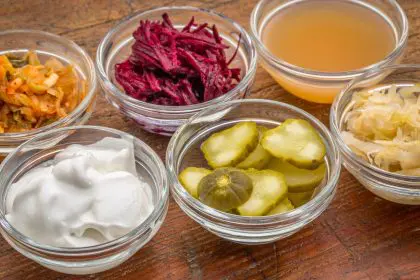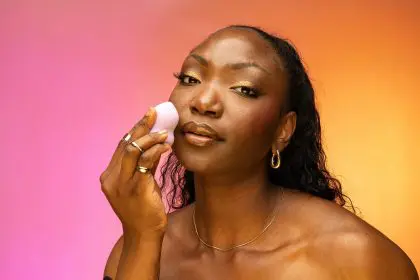In a world of fancy serums with unpronounceable ingredients and three-digit price tags, the most powerful anti-aging solution might be hiding in the most mundane place imaginable – your kitchen pantry. While beauty brands race to create the next miracle product, this humble oil has been quietly delivering remarkable results for those in the know.
Let’s be honest – we’re all chasing that elusive fountain of youth. Whether you’re spotting your first fine lines or battling more established signs of aging, the search for effective solutions can feel never-ending. But what if you’ve been overlooking something ridiculously simple that’s been right under your nose this whole time?
The unexpected powerhouse your skin craves
Rosehip seed oil might not sound revolutionary, but this unassuming botanical oil is creating serious waves in skincare circles for its remarkable rejuvenating properties. Unlike trendy ingredients that burst onto the scene with massive marketing campaigns, rosehip oil has quietly built a devoted following based purely on results.
What makes rosehip seed oil special starts with its source. Extracted from the seeds of wild rose bushes after the flowers have bloomed and dropped their petals, it contains a unique profile of nutrients that skin recognizes and utilizes efficiently. The cold-pressing process preserves the delicate compounds that might otherwise be destroyed by heat or chemical extraction methods.
The resulting golden-amber oil feels surprisingly lightweight on skin – nothing like the heavy, greasy texture many associate with facial oils. This makes it accessible even for those with combination or oily skin types who typically shy away from oil-based products.
The aging-related concerns it actually addresses
Fine lines and wrinkles develop when skin loses two critical components – collagen and moisture. Rosehip oil tackles both issues through different mechanisms, making it uniquely effective for overall skin texture improvement.
The oil contains naturally occurring vitamin A compounds similar to retinol but gentler on sensitive skin. These compounds stimulate cell turnover and collagen production, gradually improving the appearance of fine lines without the irritation often associated with prescription retinoids.
For deeper wrinkles, the high concentration of essential fatty acids in rosehip oil helps restore the skin barrier function that deteriorates with age. This improved barrier traps moisture more effectively and protects against environmental stressors that accelerate aging.
Perhaps most impressively, rosehip oil contains antioxidants that help neutralize free radicals – the unstable molecules that damage skin cells and speed up the aging process. This preventative action helps maintain results long-term rather than just providing temporary surface improvements.
The surprising science behind its effectiveness
The anti-aging power of rosehip oil comes from its unique combination of active compounds that work synergistically. While synthetic skincare often isolates single molecules, this natural oil delivers multiple beneficial compounds in balanced proportions.
The high vitamin C content supports collagen synthesis – the process your skin uses to create new structural proteins. As we age, this process naturally slows down, but the organic compounds in rosehip oil help stimulate production, leading to firmer, more resilient skin over time.
Lycopene and beta-carotene give the oil its distinctive amber color and provide potent antioxidant protection. These compounds neutralize damaging free radicals created by UV exposure and environmental pollution – two primary causes of premature aging.
Perhaps most interesting is the oil’s high content of trans-retinoic acid, a natural precursor to retinol. This compound encourages cell regeneration and turnover, helping skin shed damaged surface cells more efficiently while stimulating the production of fresh, healthy cells underneath.
Why most people miss out on its benefits
With all these impressive properties, why isn’t everyone using rosehip oil already? The answer lies partly in our conditioning to believe that effective skincare must be complicated and expensive.
Many people mistakenly assume all facial oils will clog pores or cause breakouts. The reality is that rosehip oil has a comedogenic rating of just 1 out of 5, making it suitable for most skin types. Its molecular structure allows it to absorb quickly without leaving a greasy residue.
Another common misconception is that natural ingredients are less effective than lab-created compounds. In truth, rosehip oil contains many of the same active molecules that skincare companies synthesize for their premium products, but in their natural, bioavailable form.
Finally, there’s the issue of patience. In a world of instant gratification, rosehip oil requires consistent use over several weeks to show its full benefits. Many people abandon natural solutions before giving them adequate time to work, missing out on the cumulative improvements that develop with regular application.
How to incorporate it into your existing routine
The beauty of rosehip oil lies in its versatility and simplicity. Unlike complicated actives that demand careful integration into your skincare routine, this oil plays well with most other products and can be added with minimal fuss.
For maximum absorption, apply rosehip oil to slightly damp skin after cleansing and toning but before heavier creams. Three to four drops are typically sufficient for the entire face and neck. Gently press the oil into your skin rather than rubbing, which allows for better penetration without tugging at delicate tissues.
If you’re using other active ingredients like vitamin C serum or retinol, apply those first and allow them to absorb for a few minutes before adding rosehip oil. The oil actually enhances the effectiveness of many active ingredients by improving their penetration into the skin.
For extremely dry skin or harsh winter conditions, try mixing a drop of rosehip oil into your regular moisturizer to boost its nourishing properties. This hybrid approach provides immediate hydration along with the oil’s long-term benefits.
Quality matters more than you might think
Not all rosehip oils deliver the same results, and the difference comes down to quality factors that aren’t immediately obvious. The source, extraction method, and storage all significantly impact the oil’s potency.
Cold-pressed, organic rosehip oil preserves the maximum amount of active compounds. Heat and chemical extraction methods can damage the delicate nutrients that give the oil its anti-aging properties. Look for packaging that mentions “cold-pressed” specifically.
Color and scent provide clues about quality too. Premium rosehip oil has a deep amber or golden color and a mild, earthy scent. Pale yellow oil may indicate over-processing or dilution with other oils. Similarly, completely odorless oil often signals refinement processes that strip away beneficial compounds.
Proper packaging matters enormously for preservation. Rosehip oil is susceptible to oxidation when exposed to light and air, which degrades its active ingredients. Quality products come in dark amber or blue glass bottles with dropper dispensers that minimize air exposure.
The unexpected bonus benefits beyond anti-aging
While most people seek out rosehip oil for its anti-aging properties, long-term users often discover additional skin improvements they weren’t expecting. These bonus benefits make the oil even more valuable as part of a holistic skincare approach.
Many users report significant improvements in hyperpigmentation and old acne scars. The natural vitamin A compounds gradually fade discoloration by speeding up cell turnover and preventing excess melanin production. This leads to more even skin tone without the irritation often associated with conventional brightening ingredients.
The oil also shows remarkable results for skin texture issues. Its essential fatty acids help smooth rough patches and strengthen the skin barrier, leading to more uniform texture over time. This improvement happens gradually but tends to be long-lasting rather than temporary.
Perhaps most surprisingly, many people with mild rosacea or sensitive skin find rosehip oil actually calms inflammation rather than triggering it. The oil’s anti-inflammatory properties help reduce redness and reactivity, making it suitable for skin types that normally struggle with treatment products.
The pursuit of younger-looking skin doesn’t always require cutting-edge technology or complicated routines. Sometimes the most effective solutions are the simplest ones, hiding in plain sight. Rosehip seed oil represents a return to basics – a single, natural ingredient that addresses multiple aspects of skin aging through synergistic action.
If you’ve been chasing the next big thing in anti-aging without satisfying results, perhaps it’s time to try this understated contender from your kitchen cabinet. Your skin might thank you with the kind of authentic, healthy glow that no amount of highlighter can fake.


















